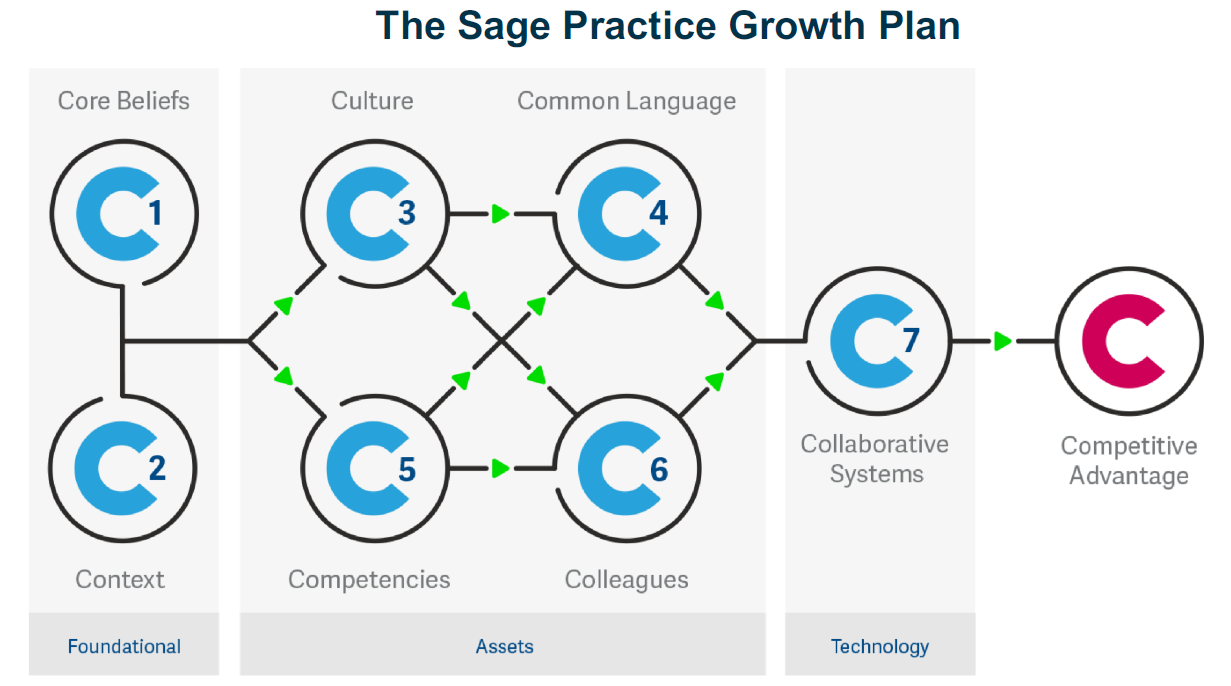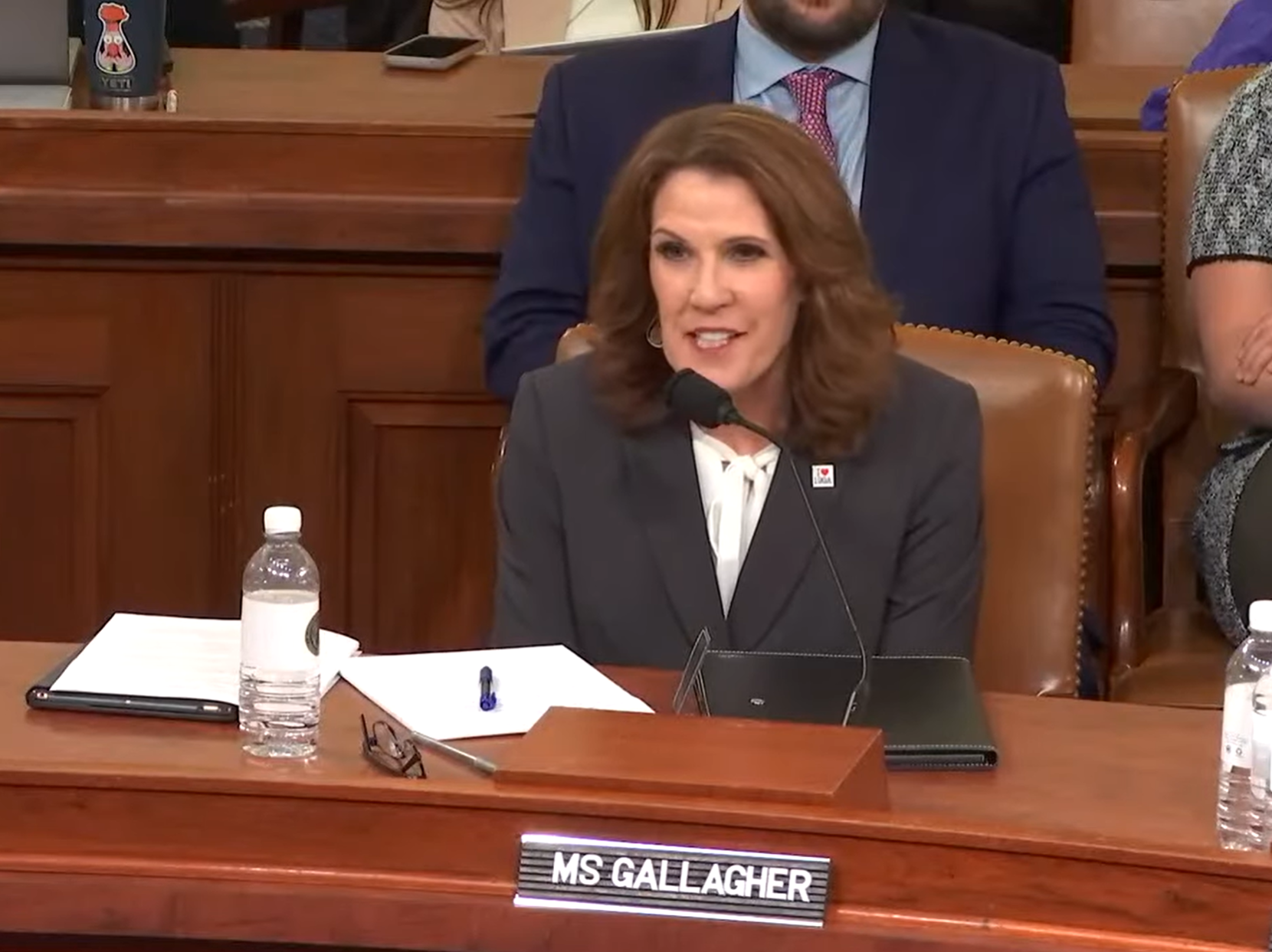In a given year, through speaking engagements, articles and blogs, podcasts, training, sales, support, conferences, on-site meetings, phone connections, and so on, the people who work at Sage around the world easily connect with hundreds of thousands of accountants in various roles in the profession. So it’s not a stretch to say that Sage gets accountants, understands what makes them tick, knows their pain points, and has a handle on what they need to do their jobs better.
“Based on what accountants have always been telling us, accounting professionals are confronted with significant change, technology improvements are happening every year, they know they need help, they don’t know where to begin.” This insight, illuminated by Jairam Padmanabhan, vice president, accountants at Sage, is the starting point for Sage’s new Practice Growth Plan, described as “a model that accountants can use, that includes a framework and takes into account everything accounting firms need to do to transform their practice.”
“Start at the very beginning, and ask these questions,” explained Padmanabhan. “Do you want to grow? Are your beliefs understood by all of the firm members? What else would you like to be doing? Do you want to change your client base? Is the right culture in place in your organization? Do you want to transform your practice? Do you have the right people in your firm? Are your competencies helping you grow your business? Depending on answers to these questions and more, firms take different paths.”
Sage’s Practice Growth Plan, a new plan developed to help accountants and bookkeepers learn new skills, anticipate the future, and reorient their thinking to put their firm ahead, was developed for the purpose of addressing the challenges facing accountants today. According to Sage’s 2017 Practice of Now report, a report based on a global survey of accountants, nearly 70 percent see their role becoming more strategic in the future due to automation, yet close to one-third are still using manual methods. Sage will announce the results of the 2018 Practice of Now report this Spring.
According to the program literature, the goal is “to provide a framework and roadmap for the journey towards becoming a digital-first practice.”
The roadmap provides a seven-step process whereby participating accountants and bookkeepers will acquire skills and information at each level or pillar, both personally and to improve their practice. The program is flexible, so participants can choose to study in all or only some of the seven pillars as needed. The seven pillars include:
- Core Beliefs: Define your mission, vision, and values to determine how you lead and where you’re going. Before a firm can move forward, it needs to define exactly what it wants to be known for, what are the key tenets it stands for, explained Padmanabhan.
- Context: Predict and plan for the future by exploring today’s business landscape. “You need to understand the context in which you’re operating. How competitive is your landscape, what do you customers look like, what is the regulatory environment? Once you understand the context as well as the core beliefs, then you can move forward to the next pillars. These first two elements guide the next four,” said Padmanabhan.
- Culture: Build a strong team by powering the growth of your people – discover how culture can stimulate innovation. By defining your firm’s culture, a firm will be more successful at attaining and retaining staff that work comfortably in the firm environment.
- Common Language: Find out how to communicate with your colleagues and the customers you want to attract. This includes formalizing your branding and your messaging both internally and externally, knowing how you are going to speak about your firm. Look at your website, for example. If you want to be viewed as a firm of the future, an outdated website conflicts with that message.
- Competencies: Propel your people with the skills they need for opportunity today and success tomorrow. Padmanabhan recommends you focus on the key competencies you want to be known for in the profession, and consider if you want to be known as a proactive, progressive firm.
- Colleagues: Support your firm with the people it needs to thrive, and find out how they can make your practice essential. “What type of employees do you want to bring into your firm? You should be looking for people who amplify your culture, speak your common language, and help beef up your competencies,” said Padmanabhan.
- Collaborative Systems and Business Model: Adopt new technology to keep up with the best practices, and integrate early for more business. According to Padmanabhan, once you have mastered the first six pillars, then you are ready to implement technology that grows with you and fits your business model.
Sage has designed each of the pillars as a separate learning process, and Sage is offering training in each of these specific areas. While these pillars build logically on each other, practitioners can select the pillars that are the most relevant to them and start the training wherever they feel it is most appropriate.
Included in the training are sessions on adapting and using technology to become advisors, acquiring new business, hiring progressive colleagues, becoming more proactive in providing advice to clients, improving firm culture so as to hire and retain staff, adapting to regulatory changes, identifying and reacting to competitive forces, and much more.
Currently, the training is all self-study, so firm members can tackle one pillar at a time, at their own pace. Future plans include live webinars, retreats, and other events. “Our sales teams are going to be working directly with accounting firms, helping them through the program, helping them understand what they need to work on,” said Padmanabhan. “This model is going to be our sales approach. When sales people sit in front of the accountants they work with, they will have the model in place and will use it in their conversations. The sales team is training on every piece of this. They will have an assessment form that they can use in their conversations.”
The process is fluid, explained Padmanabhan. Content will be monitored constantly, evaluated, and refined. And the process is not rapid. “It could take some firms six months, some may take 2-3 years. It depends on how receptive partners are and how much time they want to put into this. We’ll work with them on their schedule, evaluating the reception we get from this as we go.”
So far, there are more than 60 courses in the program, and they are offered through the Maryland CPA Society’s Business Learning Institute. Anyone can take these courses. Sage has worked with accounting firms, thought leaders, accounting profession experts, members of the 40 Under 40 in Accounting group, all of whom provided input in putting this program together, and is now recruiting firms to participate in the program. If you would like more information about this program, you can visit www.practiceofnow.com.
———–
Gail Perry, CPA, is Editor-in-Chief of CPA Practice Advisor.
Thanks for reading CPA Practice Advisor!
Subscribe Already registered? Log In
Need more information? Read the FAQs




